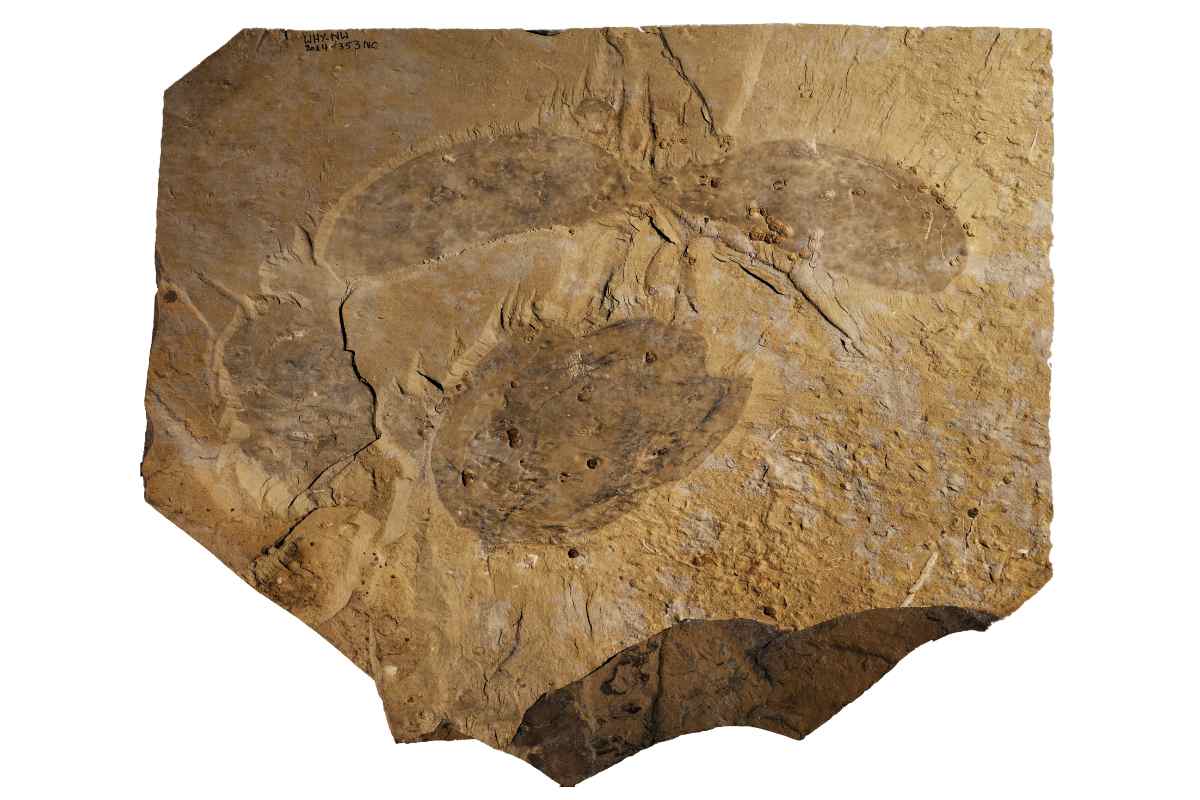
With an estimated length of half a meter, the animal was a giant compared to its contemporaries who were often barely the size of a little finger.
Paleontologists have discovered the remains of a huge new fossil species. It is an arthropod that belongs to an extinct animal group that lived on Earth during the Cambrian era. “The sheer size of this animal is absolutely mind-boggling,” said researcher Jean-Bernard Caron. “This is one of the largest Cambrian animals ever found.”
The Cambrumi is an epoch that began about 541 million years ago. It was in this era that the foundations were laid for today’s animal species on Earth. This means that the ancestors of most modern animal groups (for example, the arthropods, mollusks, and chordates) that you can clearly identify as animals originated and diversified in the early Cambrian. We call this the ‘Cambrian Explosion’ and it is characterized by the emergence of complex morphologies and drastic changes in the functioning of marine ecosystems.
Titanokorys gainesi
The remains were found in a half-billion-year-old rock in Canada’s Kootenay National Park. The new species is named Titanokorys gainesi and, as mentioned, is particularly remarkable for its size. With an estimated length of half a meter, the animal was a giant compared to its contemporaries who were often barely the size of a little finger. Titanokorys gainesi lived in the sea and belongs evolutionarily to a group of primitive arthropods known as ‘radiodonts’.
Like all radiodonts, also Titanokorys versatile eyes, a pineapple-disc-shaped, tooth-lined mouth, a pair of spiky claws under its head to catch prey, and a body with a series of flaps for swimming. Within this group, some species also possessed large, conspicuous head scales. And Titanokorys owned one of the largest ever found.

So saw Titanokorys gainesi probably from the front. Image: Lars Fields, © Royal Ontario Museum
Swimming heads
Titanokorys must have been a striking example. “Titanokorys is part of a subgroup of radiodonts, Hurdiidae characterized by an incredibly long head covered by a three-piece shield that could take on a myriad of shapes,” said study researcher Joe Moysiuk. “The head is so long in relation to the body that these animals were really little more than swimming heads.”
A Titanokorys in its natural habitat, swimming through the water.
Why some radiodonts evolved such a bewildering array of main shield shapes and sizes is still poorly understood. It was probably caused by several factors. But the broad, flattened shape of the shield of Titanokorys suggests that this species had adapted to life near the seabed.
Ecosystem
The researchers suspect that these enigmatic animals had a major impact on the ecosystem on the Cambrian seafloor. “Their front limbs looked like several stacked rakes,” Caron says. “This probably allowed them to easily take anything they could catch in their little spines to their mouths. The huge back shield could have functioned as a kind of squad.”
The discovery, described in the journal Royal Society Open Science, shows that ancient rocks in Canada’s Kootenay National Park are true gems. Several Cambrian fossils have been excavated here over the past ten years. For example, researchers have found smaller, more abundant relatives of these before Titanokorys to the Cambrora falcatus. According to the authors, these two species may have competed for similar bottom-dwelling prey.
Source material:
“Massive new animal species discovered in half-billion-year-old Burgess Shale– Royal Ontario Museum (via EurekAlert)
Image at the top of this article: Jean-Bernard Caron, © Royal Ontario Museum